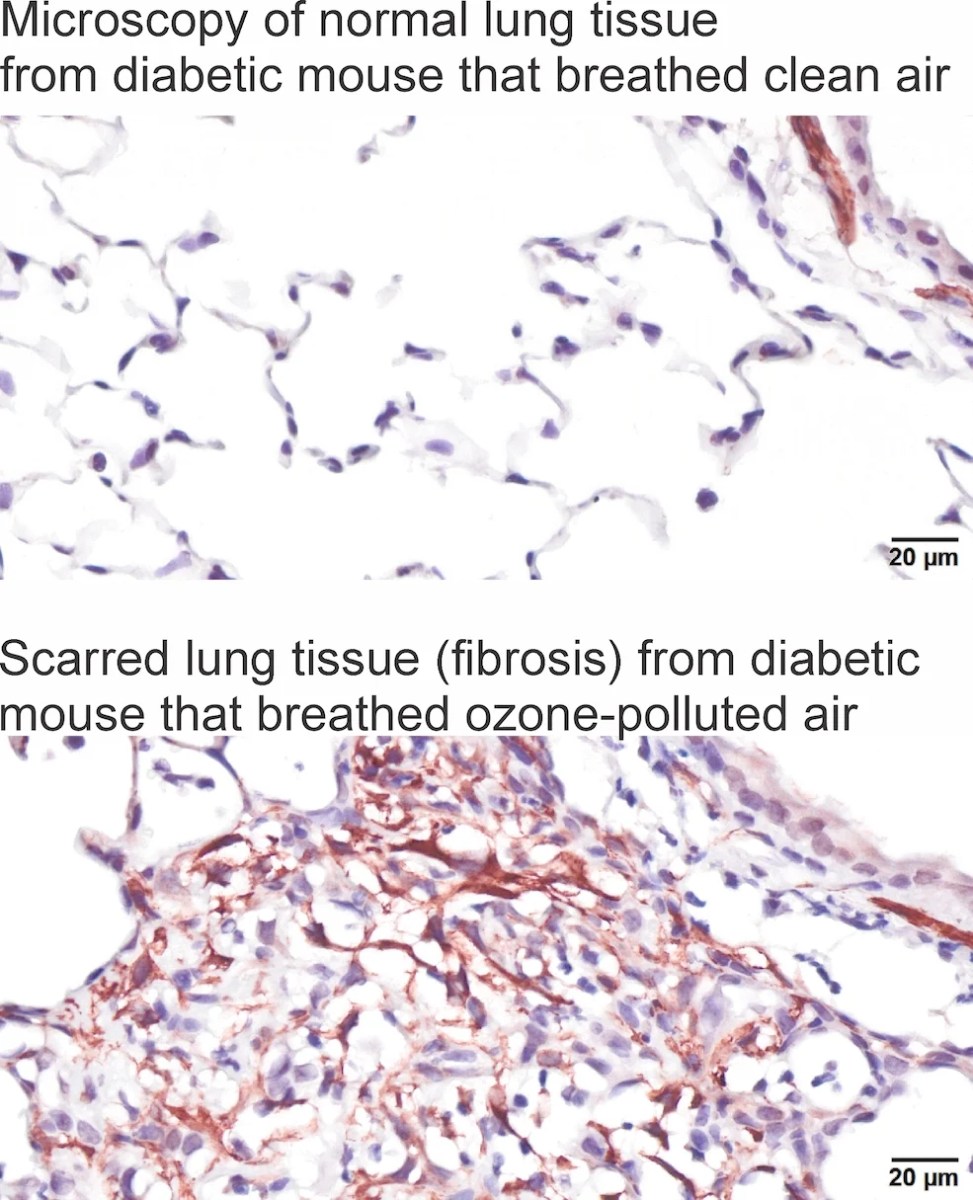
(The below Apr. 21, 2022 press release is from the American Lung Association).
A news report from the American Lung Association reveals that nearly 9 million more people were impacted by particle pollution, which can be deadly, than in last year’s report. The Lung Association’s 23rd annual “State of the Air” report, released today, also shows more days with “very unhealthy” and “hazardous” air quality than ever before in the two-decade history of this report.
The Lung Association’s annual air quality “report card” tracks and grades Americans’ exposure to unhealthy levels of short-term spikes in particle pollution (also known as soot), annual particle pollution and ground-level ozone air pollution (also known as smog) over a three-year period. This year’s report covers 2018-2020.
“‘State of the Air 2022’ shows that an unacceptable number of Americans are still living in areas with poor air quality that could impact their health,” said Harold Wimmer, National President and CEO of the American Lung Association. “More than 137 million Americans live in counties that had unhealthy levels of particle pollution or ozone. In addition, communities of color are disproportionately exposed to unhealthy air. The report found that people of color were 61% more likely than white people to live in a county with a failing grade for at least one pollutant, and 3.6 times as likely to live in a county with a failing grade for all three pollutants.”
The report continues to show long-term improvement in the nation’s air quality thanks to decades of work to reduce emissions. However, this has been offset in part by the negative impacts of hotter, drier conditions caused by climate change. Wildfires in the western U.S. were responsible for a sharp rise in particle pollution spikes in several states. Overall, the report finds that 2.1 million more Americans live in counties with unhealthy air compared to last year’s report, and exposure to deadly particle pollution has gotten worse.
For the first time, the Lung Association included Puerto Rico air pollution data, and listed pregnant people as a group at higher risk for harms associated with poor air quality.
Particle Pollution
Fine particulate matter air pollution can be deadly. These unhealthy particles in the air come from wildfires, wood-burning stoves, coal-fired power plants, diesel engines and other sources. Technically known as PM2.5, the microscopic particles can trigger asthma attacks, heart attacks and strokes, and cause lung cancer.
The report has two grades for particle pollution: one for “short-term” particle pollution, or daily spikes, and one for the annual average “year-round” level that represents the concentration of particles in each location.
Short-Term Particle Pollution
The threat of particle pollution continues to worsen. This year’s report finds an increase of close to 8.9 million more people living in areas with failing grades for unhealthy levels of short-term particle pollution compared to last year’s report. In total, 63.2 million people lived in counties that that [sic] earned an F for unhealthy spikes in particle pollution.
Top 5 Cities Most Polluted by Short-Term Particle Pollution:
• Fresno-Madera-Hanford, CA
• Bakersfield, CA
• Fairbanks, AK
• San Jose-San Francisco-Oakland, CA
• Redding-Red Bluff, CA
Year-Round Particle Pollution
More than 20.3 million people live in one of the 21 counties where year-round particle pollution levels were worse than the national air quality limit.
Top 5 Cities Most Polluted by Year-Round Particle Pollution:
• Bakersfield, CA
• Fresno-Madera-Hanford, CA
• Visalia, CA
• San Jose-San Francisco-Oakland, CA
• Los Angeles-Long Beach, CA
Ozone Pollution
Ground-level ozone pollution is a powerful respiratory irritant whose effects have been likened to a sunburn of the lung. Inhaling ozone can cause shortness of breath, trigger coughing and asthma attacks, and may shorten life. Warmer temperatures driven by climate change make ozone more likely to form and harder to clean up.
The report found that more than 122.3 million people live in a county earning a failing grade for ozone pollution. While this is 860,000 fewer than [were noted in] last year’s report, it includes millions of vulnerable people who are at an increased risk of harm from ozone, such as 27.8 million children and 18.5 million people ages 65 or older.
Top 5 Cities Most Polluted by Ozone Pollution:
• Los Angeles-Long Beach, CA
• Bakersfield, CA
• Visalia, CA
• Fresno-Madera-Hanford, CA
• Phoenix-Mesa, AZ
Cleanest Cities
The report also recognizes the nation’s cleanest cities. To make the list, a city must experience no high ozone or particle pollution days and rank among the 25 cities with the lowest year-round particle pollution levels.
Cleanest U.S. Cities (listed in alphabetical order):
• Bangor, ME
• Burlington-South Burlington-Barre, VT
• Charlottesville, VA
• Elmira-Corning, NY
• Harrisonburg-Staunton, VA
• Lincoln-Beatrice, NE
• Roanoke, VA
• Urban Honolulu, HI
• Virginia Beach-Norfolk, VA-NC
• Wilmington, NC
This year’s report continues to demonstrate that climate change is degrading air quality in the U.S. Rising temperatures and other impacts associated with climate change contribute to more frequent and intense wildfire smoke, as well as making ozone air pollution more likely to form.
The addition of 2020 data to the 2022 “State of the Air” report gives a first look at air quality trends during the COVID-19 pandemic. Regardless of the shutdowns in early 2020, there was no obvious improvement.
The American Lung Association is calling on the Biden administration to strengthen the national limits on both short-term and year-round particulate matter air pollution. Stronger standards will educate the public about air pollution levels that threaten their health and drive the cleanup of polluting sources in communities across the country. See the full report results … at Lung.org/SOTA.